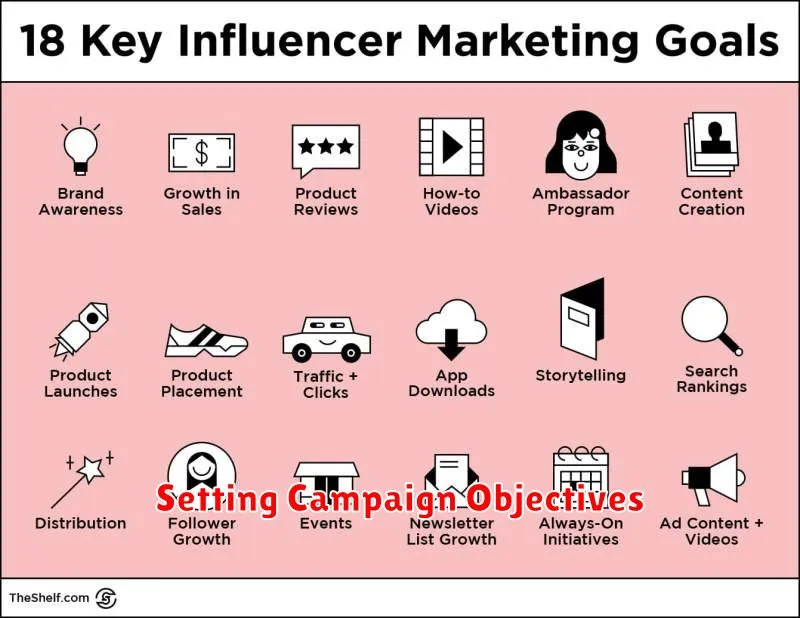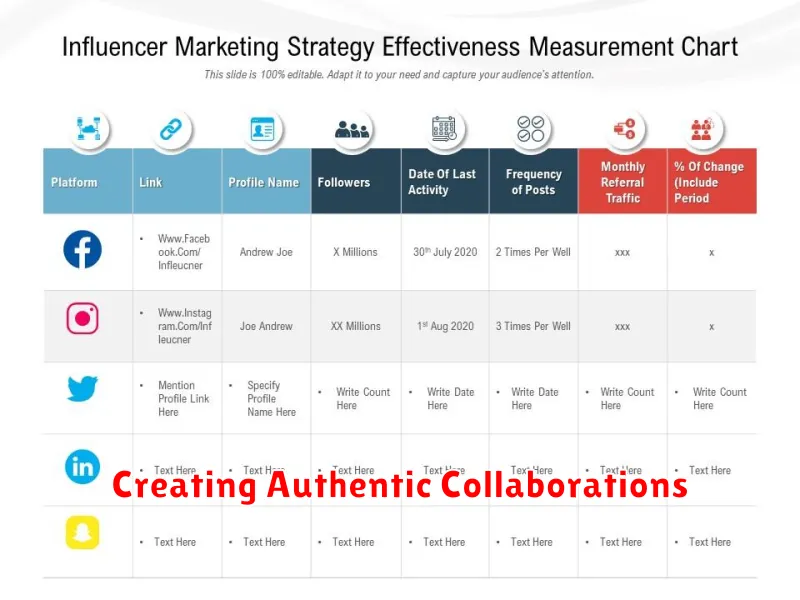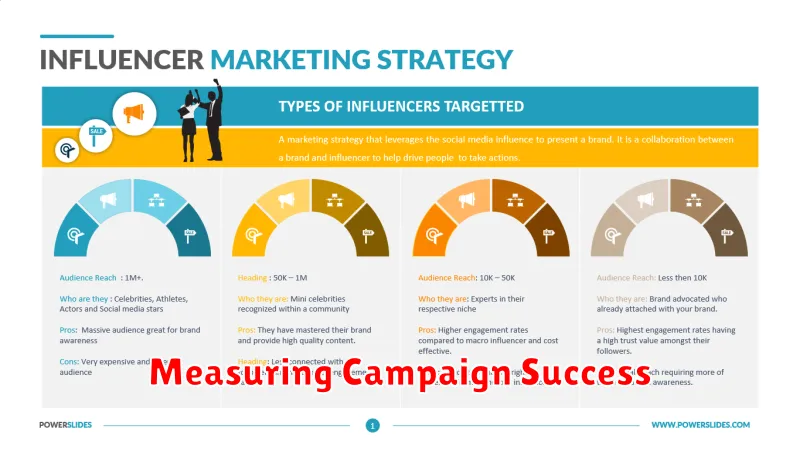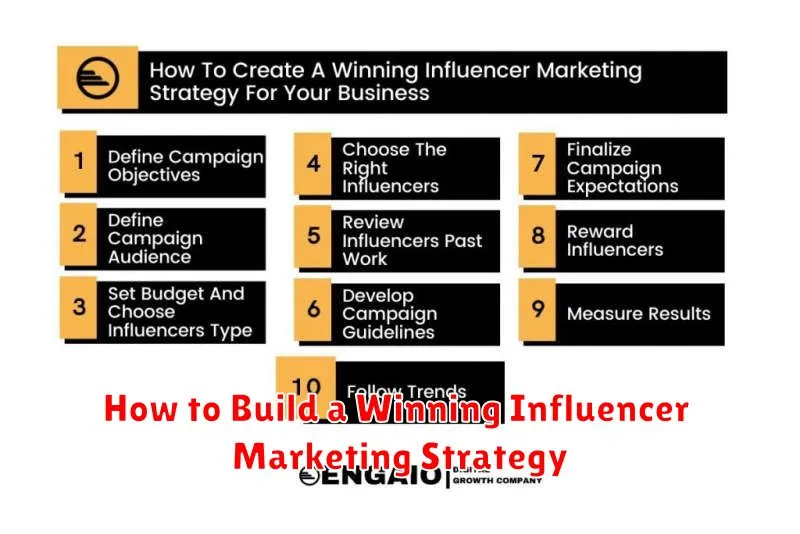In today’s digital landscape, influencer marketing has become an indispensable tool for brands seeking to expand their reach, build brand awareness, and drive sales. A well-crafted influencer marketing strategy can be the key to unlocking unprecedented growth and connecting with target audiences in authentic and engaging ways. This article will provide a comprehensive guide on how to build a winning influencer marketing strategy, covering crucial aspects from identifying the right influencers to measuring campaign success. Developing a successful influencer marketing campaign requires careful planning and execution, and understanding the nuances of this dynamic field is essential for achieving desired outcomes.
Whether you are a seasoned marketer or new to the world of influencer marketing, this guide will equip you with the knowledge and practical steps needed to build a high-impact influencer marketing strategy. Learn how to identify key influencers within your niche, establish clear campaign objectives, negotiate contracts, and track key performance indicators (KPIs). By understanding the intricacies of influencer collaborations and following the best practices outlined in this article, you can harness the power of influencer marketing to achieve your marketing goals and elevate your brand presence.
What is Influencer Marketing?
Influencer marketing is a strategic marketing approach that leverages the reach and credibility of influencers to promote brands, products, or services. Influencers are individuals who have established a significant following and authority within a specific niche or industry.
These individuals possess a dedicated audience that trusts their opinions and recommendations. By partnering with influencers, businesses can tap into this established trust and effectively reach their target audience in a more authentic and engaging way. Influencer marketing campaigns often focus on building brand awareness, driving sales, generating leads, and fostering community engagement.
Influencer marketing differs from traditional celebrity endorsements. While celebrities may have broad appeal, influencers often cultivate a more niche following, resulting in a higher level of engagement and trust with their audience.
Identifying the Right Influencers
Once you’ve established your campaign goals and target audience, the next crucial step is identifying the right influencers to partner with. This requires careful consideration of several factors to ensure alignment with your brand and effective reach of your target demographic.
Relevance is key. Look for influencers whose content and audience align with your brand’s values, products, or services. An influencer with a dedicated following interested in fitness, for example, would be a suitable choice for a sportswear brand, but not necessarily for a financial services company.
Engagement is another vital metric. High follower counts don’t always translate to high engagement. Analyze an influencer’s engagement rate (likes, comments, shares) to assess how actively their audience interacts with their content. Authentic engagement suggests a loyal and responsive following.
Reach considers the size and demographics of the influencer’s audience. While a larger reach can offer greater exposure, a smaller, highly engaged niche audience might be more effective depending on your campaign objectives. Audience demographics should align with your target market to ensure your message reaches the intended consumers.
Setting Campaign Objectives

Before launching any influencer marketing campaign, it is crucial to define clear and measurable objectives. What do you hope to achieve with this campaign? A well-defined objective provides direction and allows for accurate measurement of success.
Consider the following categories when establishing your campaign objectives:
- Brand Awareness: Increase visibility and familiarity with your brand among your target audience.
- Reach and Engagement: Expand your brand’s reach and drive interaction with your content (likes, comments, shares).
- Lead Generation: Capture contact information from potential customers for future marketing efforts.
- Sales and Conversions: Drive direct sales or other desired actions, such as app downloads or website sign-ups.
- Website Traffic: Increase the number of visitors to your website.
Choosing the right objective will guide your influencer selection, content strategy, and overall campaign execution. Ensure your objectives are Specific, Measurable, Achievable, Relevant, and Time-bound (SMART).
Creating Authentic Collaborations

Authenticity is the cornerstone of successful influencer marketing. Forced partnerships often feel inauthentic to audiences, leading to lower engagement and potentially damaging brand credibility. Instead, focus on building genuine connections with influencers who align with your brand values and target audience.
Look for influencers who genuinely use and appreciate products or services similar to yours. Their pre-existing affinity for your niche will translate into more organic and believable content that resonates with their followers. This genuine enthusiasm is more effective than scripted endorsements.
Collaboration, not dictation, is key. Allow influencers creative freedom within established campaign guidelines. Their unique style and voice are what attract their audience. By respecting their expertise, you empower them to create content that feels natural and engaging, ultimately leading to better results for your brand.
Measuring Campaign Success

Measuring the success of your influencer marketing campaign is crucial to understanding its impact and optimizing future strategies. It’s important to establish clear Key Performance Indicators (KPIs) upfront, aligned with your campaign goals.
If your goal is brand awareness, track metrics like reach, impressions, and social media mentions. For driving sales, focus on conversions, website traffic originating from influencer content, and promo code usage.
Engagement metrics such as likes, comments, shares, and click-through rates provide valuable insights into audience response. Analyzing these metrics helps assess the effectiveness of the influencer’s content and its resonance with the target audience.
Avoiding Common Pitfalls
Even with careful planning, influencer marketing campaigns can stumble. Choosing the wrong influencer is a major pitfall. An influencer’s audience should align with your target demographic. Simply having a large following isn’t enough. Look for authentic engagement and a genuine connection with their followers.
Setting unclear objectives is another common mistake. Define your goals from the outset. Are you aiming for brand awareness, increased sales, or website traffic? Measurable objectives allow you to track progress and determine campaign success.
Failing to disclose the partnership can damage your brand’s credibility. Transparency is crucial. Ensure influencers clearly disclose their sponsored relationship with your brand. This builds trust with their audience and avoids potential legal issues.
Finally, neglecting to measure results renders your efforts less effective. Track key metrics throughout the campaign. This data informs future strategies and maximizes your return on investment.

